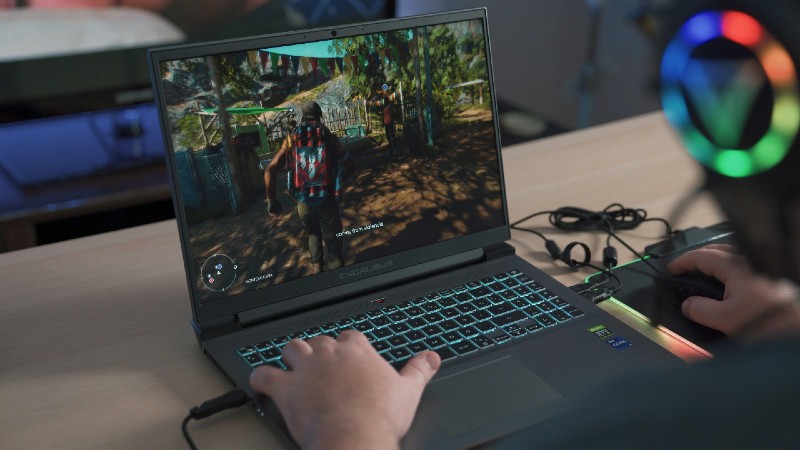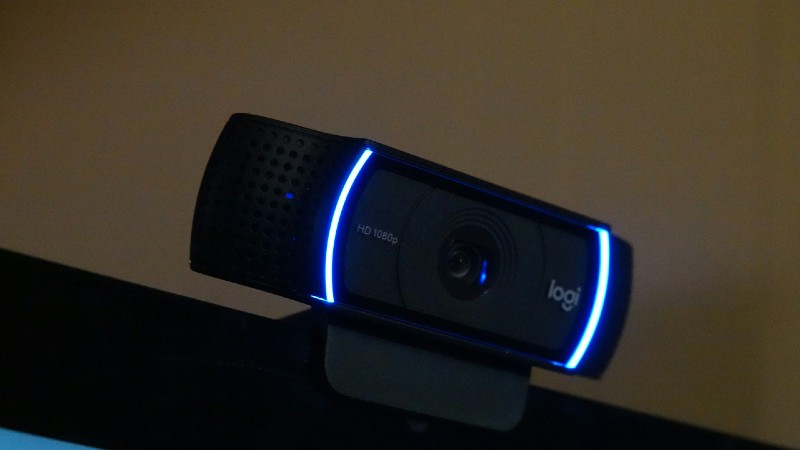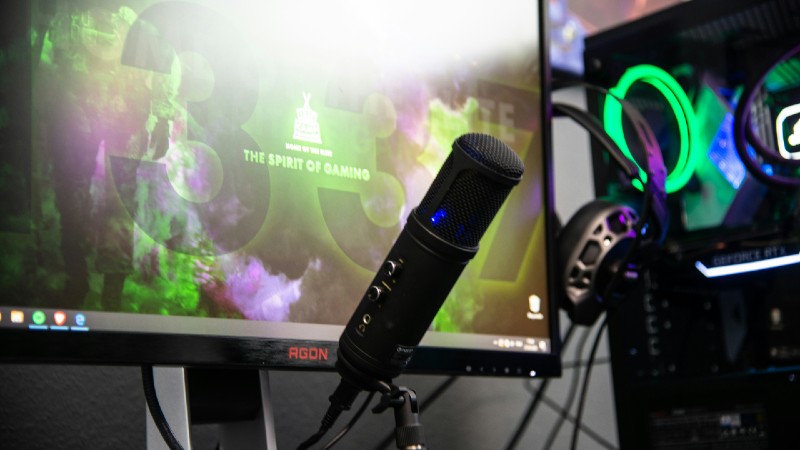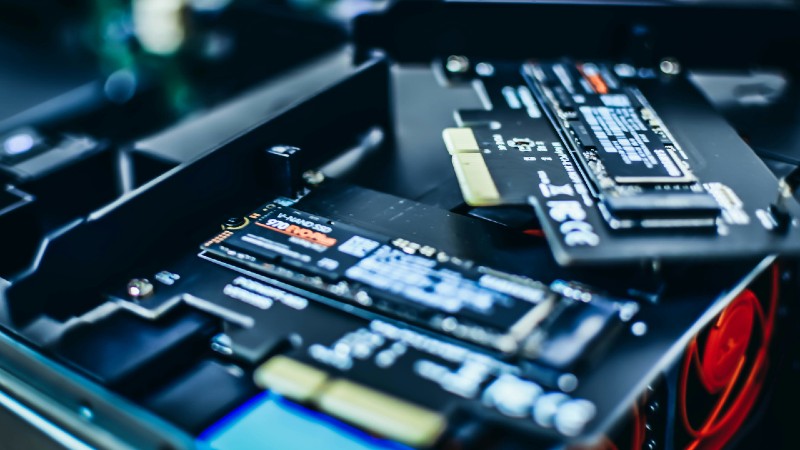Disclosure: As an Amazon Associate, we earn from qualifying purchases. This post contains affiliate links. Our reviews are based on extensive research, including customer feedback and specs, though we haven’t tested every product listed.
In the ever-evolving world of gaming technology, 2025 marks a pivotal year where laptops are pushing boundaries like never before. With advancements in AI integration, higher refresh rate displays, and graphics cards capable of handling ray-traced worlds at unprecedented frame rates, gaming laptops have become more than just portable powerhouses—they’re versatile machines for creators, professionals, and enthusiasts alike. As graphics demands from titles like the latest AAA releases and VR experiences continue to escalate, selecting the right laptop involves balancing raw performance with factors like portability, battery efficiency, and thermal management.
I’ve always been fascinated by how these devices blend cutting-edge hardware into compact forms, allowing users to dive into immersive gaming sessions without being tethered to a desk. This year, the market is flooded with options that cater to different needs, from ultra-slim designs for on-the-go play to beastly rigs that rival desktops. In this comprehensive guide, we’ll explore five standout models: the Razer Blade 16 (2025), ASUS ROG Zephyrus G14, Lenovo Legion Pro 7i, MSI Titan 18 HX, and Acer Predator Triton Neo 16. These selections represent a mix of premium builds, innovative features, and value propositions, drawing from the latest specs and user feedback to help you make an informed choice.
Whether you’re upgrading from an older machine or entering the gaming laptop arena for the first time, understanding the nuances of each can make all the difference. We’ll start with a quick overview comparison, delve into detailed reviews of each, compare them head-to-head, provide a buying guide on key considerations, and wrap up with final thoughts. Let’s dive in and see what makes these laptops shine in 2025.
At-a-Glance: Comparing the Top Contenders
To give you a snapshot before we get into the details, here’s a comparison table highlighting the key specifications of these five gaming laptops. This should help you quickly identify which one aligns with your priorities, whether it’s raw power, portability, or affordability.
| Product | CPU | GPU | Display | RAM/Storage | Price (Jul 2025) | Battery Life (Est.) |
|---|---|---|---|---|---|---|
| Razer Blade 16 (2025) | AMD Ryzen AI 9 HX 370 | NVIDIA GeForce RTX 5090 with 24GB GDDR7 VRAM GPU with 24GB VRAM | 16″ OLED QHD+ 240Hz | 32GB / 2TB SSD | $3,099 | Up to 7+ hours |
| ASUS ROG Zephyrus G14 | AMD Ryzen AI 9 HX 370 | NVIDIA GeForce RTX 5080 | 14″ 3K (2880×1800) OLED 120Hz | 32GB / 1TB SSD | $1,757 | Up to 11 hours |
| Lenovo Legion Pro 7i | Intel Core Ultra 9 275HX | NVIDIA RTX 5090 | 16″ OLED 2560×1600 240Hz | 64GB / 1TB SSD | $4,499 | Up to 5-6 hours |
| MSI Titan 18 HX | Intel Core Ultra 9 285HX | NVIDIA GeForce RTX 5090 with 24GB GDDR7 VRAM | 18″ UHD+ Mini LED 120Hz | 64GB / up to 6TB SSD (e.g., 2x3TB) | $6,849 | Up to 4-5 hours |
| Acer Predator Triton Neo 16 | Intel Core Ultra 9 185H (Meteor Lake) | NVIDIA GeForce RTX 4070 | 16″ WQXGA+ 165Hz | 32GB / 1TB SSD | $1,899 | Up to 8 hours |
This table is based on the provided configurations, but note that actual performance can vary with usage. For instance, higher-end GPUs like the RTX 5090 in the MSI Titan offer superior ray tracing, while smaller form factors like the Zephyrus G14 prioritize mobility.
Diving Deeper: In-Depth Looks at Each Laptop
Now, let’s examine each model more closely. I’ll highlight the specifications, key features, and balanced pros and cons derived from technical details and aggregated user experiences. Remember, these insights come from a synthesis of available data, focusing on what makes each unique in the 2025 landscape.
Razer Blade 16 (2025): Premium Power in a Sleek Package

The Razer Blade 16 (2025) continues Razer’s tradition of crafting laptops that feel like luxury items while delivering serious gaming credentials. Equipped with an AMD Ryzen AI 9 HX 370 processor and NVIDIA GeForce RTX 5090 with 24GB GDDR7 VRAM GPU with 24GB VRAM GPU, this machine is designed for high-frame-rate gaming and content creation. The 16-inch OLED QHD+ display with a 240Hz refresh rate promises vibrant colors and smooth visuals, ideal for fast-paced games. It comes with 32GB of RAM and a 2TB SSD, running Windows 11, and features Chroma RGB lighting for that signature Razer flair, along with Snap Tap for enhanced keyboard responsiveness.
Key features include a premium aluminum chassis that’s remarkably thin for its power level, advanced cooling with vapor chamber technology to manage heat during extended sessions, and a suite of ports including Thunderbolt 5 for future-proof connectivity. The display is a standout, offering deep blacks and high contrast thanks to OLED tech, which enhances everything from gaming to movie watching. Audio is handled by THX Spatial Audio speakers, providing immersive sound without needing headphones immediately.
Pros:
- Exceptional build quality with a svelte, premium metal design that feels durable and portable despite the 16-inch size. This makes it easier to carry than bulkier competitors.
- Impressive battery life for a gaming laptop, often exceeding 7 hours in light usage, which is surprising given the powerful components. This allows for some unplugged productivity or casual gaming.
- Stunning display with high refresh rates and vivid colors, perfect for gamers seeking low-latency performance and creators needing accurate visuals.
- Strong overall performance, handling demanding titles at ultra settings with ease, thanks to the RTX 5090.
Cons:
- The price is on the higher side, which might deter budget-conscious buyers, especially when compared to similar-spec machines
- Potential for loud fan noise during intense gaming sessions, as the slim design can lead to thermal throttling if not managed.
- Some reports of software or driver issues, which could affect initial setup or long-term reliability
- The large trackpad, while responsive, has occasional palm rejection problems, which can be frustrating during typing or navigation.
Overall, the Razer Blade 16 strikes a balance between aesthetics and capability, making it appealing for those who value style as much as substance. If you’re drawn to its elegant design and robust features, it could be a worthwhile investment for seamless gaming experiences.
If this aligns with your needs, explore more details and purchase options here on Amazon.
ASUS ROG Zephyrus G14: Compact Champion for Mobile Gamers

The ASUS ROG Zephyrus G14 stands out for its compact 14-inch form factor, making it one of the most portable options in this lineup. Powered by an AMD Ryzen AI 9 HX 370 processor and NVIDIA GeForce RTX 5080 GPU, it includes 32GB of RAM and a 1TB SSD, all housed in a sleek Moonlight White chassis. the 2025 refresh focuses on efficiency and AI enhancements for better multitasking.
Features like the AniMe Matrix lid for customizable LED animations add a fun, personal touch, while the ErgoLift hinge improves typing ergonomics and cooling. The display is a 3K (2880×1800) OLED panel with a 120Hz refresh rate, supporting smooth gameplay and vivid visuals, and the laptop includes robust connectivity options like USB-C with Power Delivery.
Pros:
- Highly portable design that’s lightweight and easy to carry, ideal for travelers or students who game on the side
- Impressive battery life, often reaching 11 hours in mixed use, thanks to efficient AMD
- Solid performance for its size, with updates in the 2025 model boosting speeds over previous generations for gaming and productivity
- Comfortable keyboard and trackpad, providing a premium typing experience that’s rare in compact gaming laptops
Cons:
- Fan noise can be grating during heavy loads, potentially distracting in quiet environments
- Battery drains faster under gaming stress, limiting unplugged playtime compared to lighter tasks
- The RTX 5080 GPU handles even the latest ultra-demanding titles well at high settings, making it suitable for high-end gaming and creative workloads
- Price in some regions feels premium for the specs, especially when larger laptops offer more power for similar
This laptop appeals to those prioritizing mobility without sacrificing too much on performance. It’s a versatile pick for everyday use with gaming capabilities.
Ready to make it yours? Check availability on Amazon.
Lenovo Legion Pro 7i: Uncompromising Performance Beast

The Lenovo Legion Pro 7i is a powerhouse tailored for serious gamers, featuring an Intel Core Ultra 9 275HX CPU and NVIDIA RTX 5090 GPU with 24GB GDDR7. Its 16-inch 2560×1600 240Hz OLED display ensures crisp, fluid visuals, backed by 64GB DDR5 RAM and 1TB SSD. WiFi 7 support adds value, running on Windows 11 Pro.
Standout features include Legion Coldfront cooling for sustained performance, RGB lighting zones, and a full array of ports. The OLED screen supports HDR for enhanced contrast in games and media.
Pros:
- Outstanding gaming performance, excelling in benchmarks and handling intensive tasks effortlessly.
- Sturdy build with a sleek design that doesn’t overly scream “gamer,” making it suitable for professional settings.
- Vibrant OLED display with high refresh rate, ideal for competitive play and content creation.
- Ample RAM and storage for multitasking, future-proofing it against upcoming software demands.
Cons:
- Battery life is mediocre, typically 5-6 hours, requiring frequent charging for mobile use.
- High price tag may not justify for casual users, especially with the premium configuration.
- Some aesthetic and ergonomic choices, like the keyboard layout, receive mixed feedback.
- Can run hot under load, though cooling mitigates it better than some rivals.
For those seeking desktop-like power in a laptop, this is a top contender that doesn’t compromise on speed.
Interested? Find it here on Amazon.
MSI Titan 18 HX: The Ultimate Desktop Replacement

The MSI Titan 18 HX is a monster of a machine with an Intel Core Ultra 9 285HX CPU and NVIDIA GeForce RTX 5090 with 24GB GDDR7 VRAM GPU, paired with 64GB DDR5 RAM and up to 6TB SSD storage (e.g., 2x3TB). The 18-inch UHD+ Mini LED display at 120Hz offers stunning clarity, and it’s built for Windows 11 Pro with AI enhancements.
Key elements include mechanical Cherry MX switches for the keyboard, advanced MSI OverBoost for power spikes, and a haptic touchpad. It’s designed for extreme performance, with robust cooling to handle 270W TDP.
Pros:
- Insane raw power, topping charts in gaming and productivity benchmarks.
- Gorgeous Mini-LED display with exceptional vibrancy and size for immersive experiences.
- Abundant storage and RAM, perfect for creators dealing with large files or virtual machines.
- Feature-rich with AI tools and customizable options, enhancing usability for pros.
Cons:
- Extremely expensive, positioning it as a luxury item rather than accessible tech.
- Heavy and bulky, reducing portability significantly.
- Battery life is short, around 4-5 hours, due to the power-hungry components.
- Not optimized for 4K gaming in all scenarios, despite the hardware.
This is for users who want no limits, serving as a true desktop alternative.
See if it’s right for you on Amazon.
Acer Predator Triton Neo 16: Versatile Value for Gamers and Creators

The Acer Predator Triton Neo 16 blends gaming and creation with an Intel Core Ultra 9 185H (Meteor Lake) CPU and NVIDIA GeForce RTX 4070 GPU. Its 16-inch WQXGA+ 165Hz display is Calman-verified for color accuracy, with 32GB LPDDR5X RAM and 1TB SSD. AI-powered features enhance workflows, and it’s compact for its class.
Highlights include Copilot+ AI tools, advanced cooling with AeroBlade fans, and a fingerprint reader for security. The display supports creators with precise colors.
Pros:
- Balanced performance for gaming and content creation, with good thermal management keeping temps low.
- High-quality display that’s color-accurate, making it versatile beyond gaming.
- Decent battery life for the category, up to 8 hours in mixed use.
- Affordable compared to premium rivals, offering strong value.
Cons:
- Webcam and audio quality are average, not standing out in video calls or media.
- Some build quality concerns in related models, like heat in certain areas.
- GPU is mid-range, so it may not handle extreme 4K gaming as well as higher-end options.
- Software bloat can be an issue, requiring cleanup for optimal experience.
It’s a jack-of-all-trades that’s budget-friendly yet capable.
Discover more on Amazon.
Head-to-Head Comparisons: How They Stack Up
Beyond individual reviews, comparing these laptops across categories reveals their strengths. In performance, the MSI Titan 18 HX and Lenovo Legion Pro 7i lead with their top-tier GPUs (both using RTX 5090), delivering higher frame rates in benchmarks than the Razer Blade 16’s RTX 5090 or the Acer’s RTX 4070. The ASUS ROG Zephyrus G14, with its RTX 5080 GPU, delivers top-tier performance while maintaining impressive efficiency for mobile gaming.
Portability favors the Zephyrus G14 and Razer Blade 16, both slim and light, while the Titan’s 18-inch size makes it a stationary beast. Battery life sees the Zephyrus and Triton Neo pulling ahead with 11 and 8 hours, respectively, versus the power-hungry Legion and Titan’s shorter endurance.
Display-wise, OLED panels in the Razer and Lenovo offer superior contrast, while the Acer uses an IPS panel, but the MSI’s Mini-LED provides brightness for HDR content. Thermals are managed well across the board, though fan noise is a common gripe in the Zephyrus and Blade.
Value is subjective: The Acer and ASUS offer entry points under $2,000, while the MSI’s $6,849 suits enthusiasts willing to pay for extremes.
Essential Buying Guide: Key Factors to Consider
When shopping for a gaming laptop in 2025, several elements deserve attention. First, the CPU and GPU combo dictates performance—look for Intel Core Ultra or AMD Ryzen AI series with RTX 40/50-series GPUs for future-proofing ray tracing and AI features.
Display quality matters: Higher refresh rates (165Hz+) reduce motion blur, and OLED/Mini-LED panels enhance visuals, but consider calibration for creators.
Cooling and build: Vapor chambers and multiple fans prevent throttling, while aluminum chassis add durability. Battery life varies—aim for 6+ hours if mobility is key.
RAM (32GB+) and storage (1TB+) ensure smooth multitasking. Ports, keyboard quality, and software ecosystems (like Razer’s Synapse) enhance usability.
Finally, budget: Balance needs with cost, as extras like RGB or AI can inflate prices.
Wrapping It Up: Finding Your Perfect Match
In 2025, these five laptops showcase the diversity of the gaming market. The Razer Blade 16 offers elegant power, the ASUS ROG Zephyrus G14 prioritizes portability, the Lenovo Legion Pro 7i delivers balanced might, the MSI Titan 18 HX reigns supreme in performance, and the Acer Predator Triton Neo 16, although released in 2023/2024 with older hardware, provides versatile value. Depending on your lifestyle—whether it’s mobile gaming, professional creation, or all-out dominance—one of these should fit seamlessly. Consider your priorities, and you’re set for an exciting year ahead.




